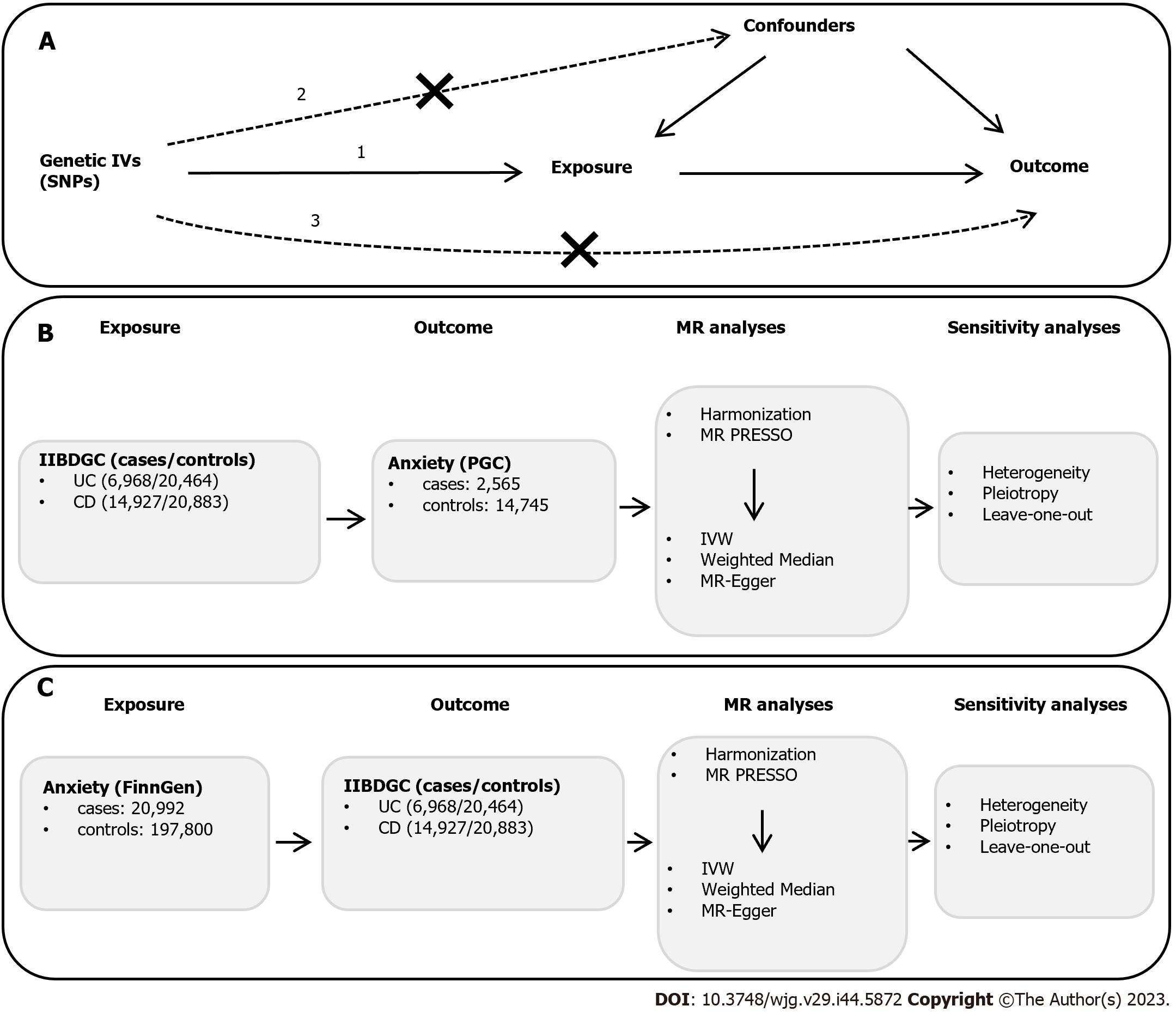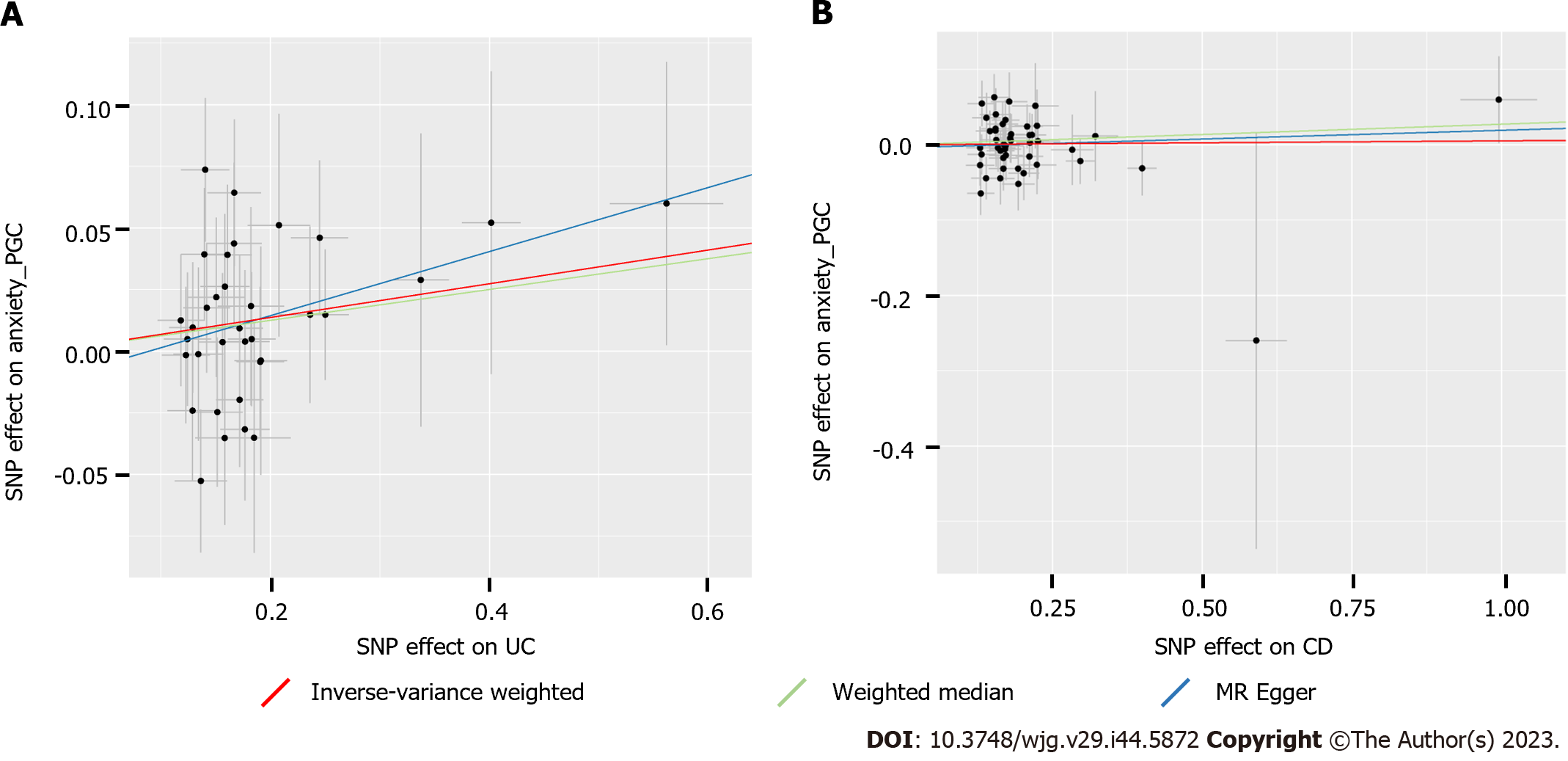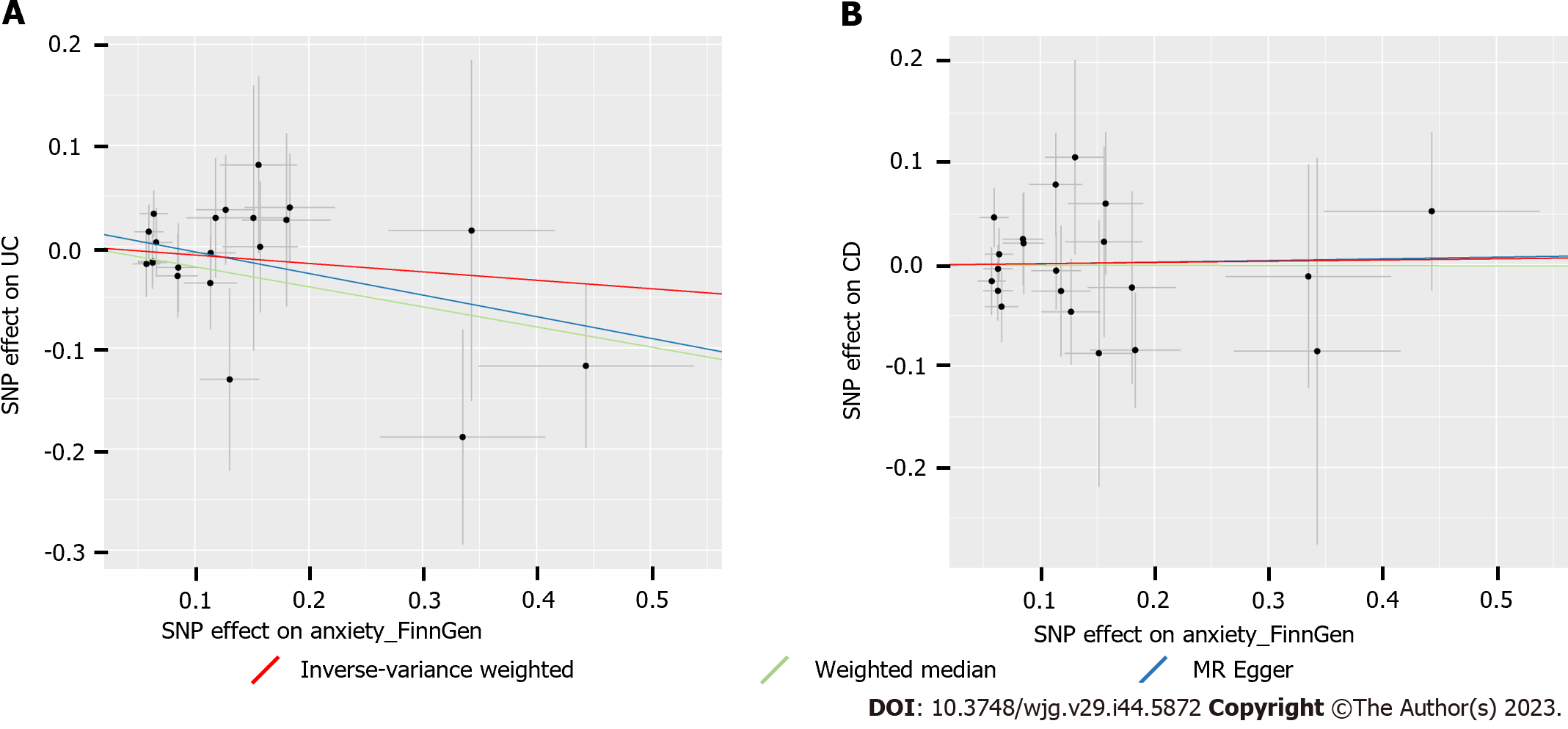Copyright
©The Author(s) 2023.
World J Gastroenterol. Nov 28, 2023; 29(44): 5872-5881
Published online Nov 28, 2023. doi: 10.3748/wjg.v29.i44.5872
Published online Nov 28, 2023. doi: 10.3748/wjg.v29.i44.5872
Figure 1 Schematic overview of the study design.
A: Mendelian randomization (MR) analysis illustration. There are three principal assumptions in MR design: (1) Relevance assumption: the genetic instrument variants (IVs) are strongly associated with the exposure; (2) independence assumption: the genetic IVs do not affect the outcome through the confounders; and (3) exclusion assumption: The genetic IVs do not affect the outcome directly but only via indirect exposure; B: MR analysis from ulcerative colitis (UC) or Crohn’s disease (CD) to anxiety. UC- or CD-related single-nucleotide polymorphisms (SNPs) obtained from genome-wide association studies (GWAS) statistics in the International Inflammatory Bowel Disease Genetics Consortium (IIBDGC) consortium were identified as IVs, and GWAS summary statistics of anxiety were retrieved from Psychiatric Genomics Consortium; C: MR analysis from anxiety to UC or CD. Anxiety-related SNPs retrieved from FinnGen were identified as IVs, and GWAS statistics for UC and CD were obtained from the IIBDGC consortium. MR analysis was performed after the harmonization process and MR Pleiotropy Residual Sum and Outlier test and subsequently sensitivity analyses to strengthen the MR estimates. MR: Mendelian randomization; IVs: Instrumental variables; UC: Ulcerative colitis; CD: Crohn’s disease; PGC: Psychiatric Genomics Consortium; IVW: Inverse-variance weighted; PRESSO: Pleiotropy Residual Sum and Outlier; IIBDGC: International Inflammatory Bowel Disease Genetics Consortium.
Figure 2 Scatter plots of Mendelian randomization analysis showing the effect of ulcerative colitis and Crohn’s disease on anxiety.
A: Analysis of ulcerative colitis (UC) and anxiety; B: Analysis of Crohn’s disease (CD) and anxiety. The x-axes represent the genetic instrument-UC or instrument-CD associations, and the y-axes represent genetic instrument-anxiety associations. Black dots denote the genetic instruments included in the primary Mendelian randomization (MR) analysis. Red: Inverse-variance weighted; Green: Weighted median; blue: MR Egger. CD: Crohn’s disease; UC: Ulcerative colitis; PGC: Psychiatric Genomics Consortium; SNP: Single-nucleotide polymorphism.
Figure 3 Scatter plots of Mendelian randomization analysis showing the effect of anxiety on ulcerative colitis and Crohn’s disease.
A: Analysis of anxiety and ulcerative colitis (UC); B: Analysis of anxiety and Crohn’s disease (CD). The x-axes represent the genetic instrument-anxiety associations, and the y-axes represent genetic instrument-UC or instrument-CD associations. Black dots denote the genetic instruments included in the primary Mendelian randomization (MR) analysis. Red: inverse-variance weighted; green: weighted median; blue: MR Egger. Due to the same estimate from the weighted median and MR Egger methods in some analyses, those figures only contain two lines. However, the color of the overlapped lines is darker than that of the MR Egger. CD: Crohn’s disease; UC: Ulcerative colitis; SNP: Single-nucleotide polymorphism.
- Citation: He Y, Chen CL, He J, Liu SD. Causal associations between inflammatory bowel disease and anxiety: A bidirectional Mendelian randomization study. World J Gastroenterol 2023; 29(44): 5872-5881
- URL: https://www.wjgnet.com/1007-9327/full/v29/i44/5872.htm
- DOI: https://dx.doi.org/10.3748/wjg.v29.i44.5872















